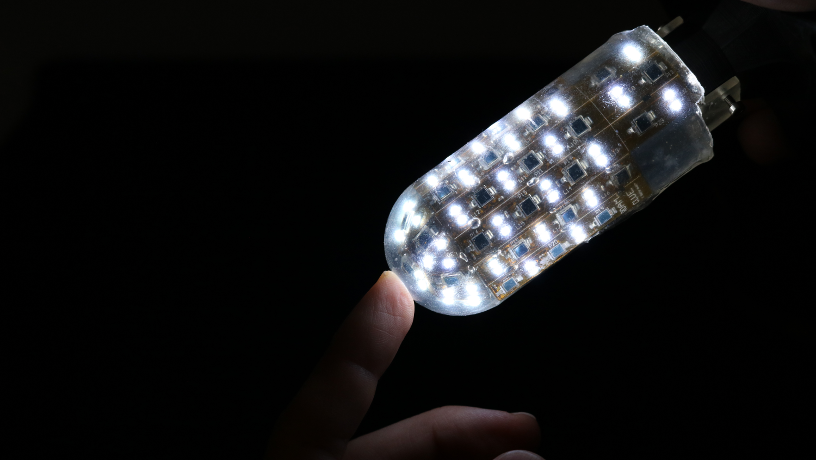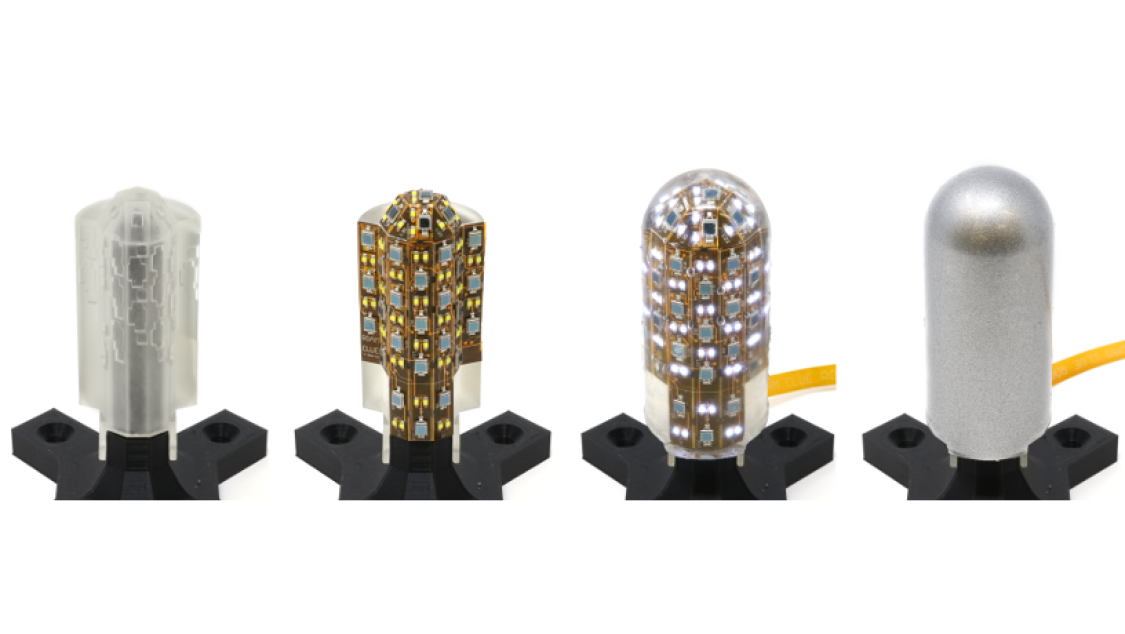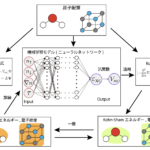2020-02-26 コロンビア大学


・ コロンビア大学が、光学的なタクタイル(触感)センサーを完全統合したロボットフィンガーを開発。
・ 同センサーは、人間の指が機能するように、1mm 以上の大きな多曲面で極めて高精度に接触箇所を特定する。現在、タッチセンサーのロボットフィンガーへの統合は、多曲面への対応、ワイヤの数や狭小な指先への取付け等の課題のため困難であり、ロボティクスへのタクタイルセンシングの完全統合は未達成。
・ 今回、ロボットフィンガーの検知面積をカバーする透過性の導波管層に内蔵した、複数の LED とフォトダイオード間を移動する光信号を利用する新アプローチを採用。接触箇所を精確に特定し、複雑な 3D 構造表面で垂直抗力を検出する、多曲面対応型ロボットフィンガーを実証した。
・ 同タクタイルセンサーを支える 2 種類の技術の一つは、光を利用した触感の検出。ロボットフィンガーの「皮膚」の下の透明なシリコーン層に向けて 30 個超の LED が光を照射すると、30 個超のフォトダイオードがそれらの光の反射を計測する。
・ ロボットフィンガーが物体に触れると、その皮膚が歪み、それに伴い下部の透明層の光も変化する。各 LED から各フォトダイオードに移動した光の量を計測し、物体への接触に関する情報を含有する 1,000 個近くの信号を獲得。光は曲面も反射するため、これらの信号は指先のような複雑な 3D 形状をも網羅する。
・ もう一つの技術は、獲得した信号データの機械学習アルゴリズムによる処理。これらの大量の全信号は部分的に重なっていて極めて複雑なため、人間による処理は不可能。現在の機会学習技術では、接触箇所や垂直抗力等の最も重要な情報のみの抽出を学習できる。
・ また、このようなタクタイルロボットフィンガーシステムは、外部電子機器不要でロボットハンドに僅か 14 本のワイヤケーブルで容易に統合できる。同フィンガーを取付けた、物体を把持・操作できるロボットハンド 2 本(3 本指版と 4 本指版)を作製。来月には、触感覚と固有受容感覚データをベースに、これらのハンドで複雑なタスク遂行能力を実証予定。
URL: https://engineering.columbia.edu/press-releases/ciocarlie-tactile-robot-finger
(関連情報)
IEEE/ASME Transactions on Mechatronics 掲載論文(アブストラクトのみ:全文は有料)
A Sensorized Multicurved Robot Finger with Data-driven Touch Sensing via Overlapping Light Signals
URL: https://ieeexplore.ieee.org/document/9006916
<NEDO海外技術情報より>
Abstract
Despite significant advances in touch and force transduction, tactile sensing is still far from ubiquitous in robotic manipulation. Existing methods for building touch sensors have proven difficult to integrate into robot fingers due to multiple challenges, including difficulty in covering multicurved surfaces, high wire count, or packaging constrains preventing their use in dexterous hands. In this paper, we present a multicurved robotic finger with accurate touch localization and normal force detection over complex, three-dimensional surfaces. The key to our approach is the novel use of overlapping signals from light emitters and receivers embedded in a transparent waveguide layer that covers the functional areas of the finger. By measuring light transport between every emitter and receiver, we show that we can obtain a very rich signal set that changes in response to deformation of the finger due to touch. We then show that purely data-driven deep learning methods are able to extract useful information from such data, such as contact location and applied normal force, without the need for analytical models. The final result is a fully integrated, sensorized robot finger, with a low wire count and using easily accessible manufacturing methods, designed for easy integration into dexterous manipulators.



